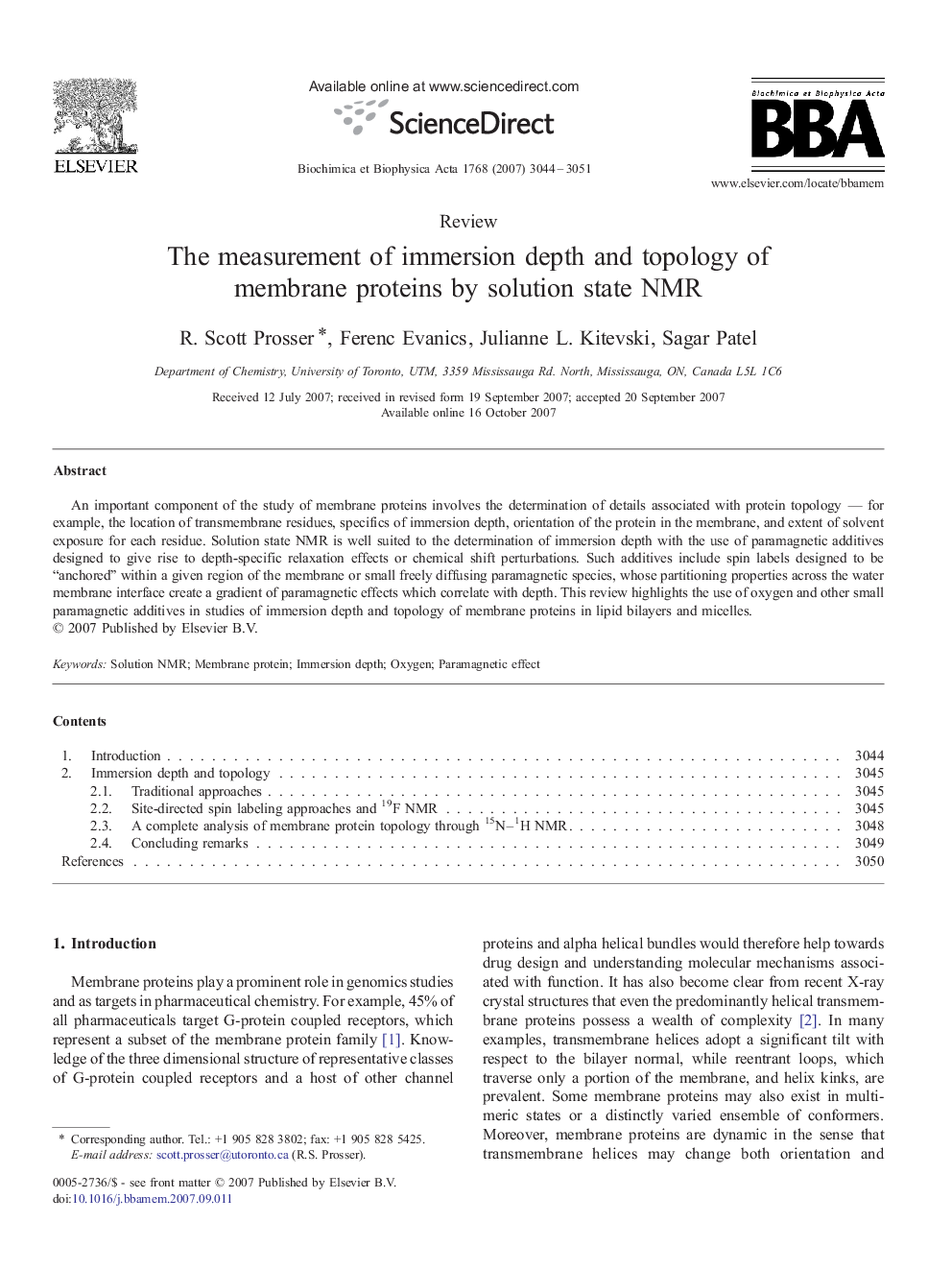| Article ID | Journal | Published Year | Pages | File Type |
|---|---|---|---|---|
| 1945329 | Biochimica et Biophysica Acta (BBA) - Biomembranes | 2007 | 8 Pages |
An important component of the study of membrane proteins involves the determination of details associated with protein topology — for example, the location of transmembrane residues, specifics of immersion depth, orientation of the protein in the membrane, and extent of solvent exposure for each residue. Solution state NMR is well suited to the determination of immersion depth with the use of paramagnetic additives designed to give rise to depth-specific relaxation effects or chemical shift perturbations. Such additives include spin labels designed to be “anchored” within a given region of the membrane or small freely diffusing paramagnetic species, whose partitioning properties across the water membrane interface create a gradient of paramagnetic effects which correlate with depth. This review highlights the use of oxygen and other small paramagnetic additives in studies of immersion depth and topology of membrane proteins in lipid bilayers and micelles.
